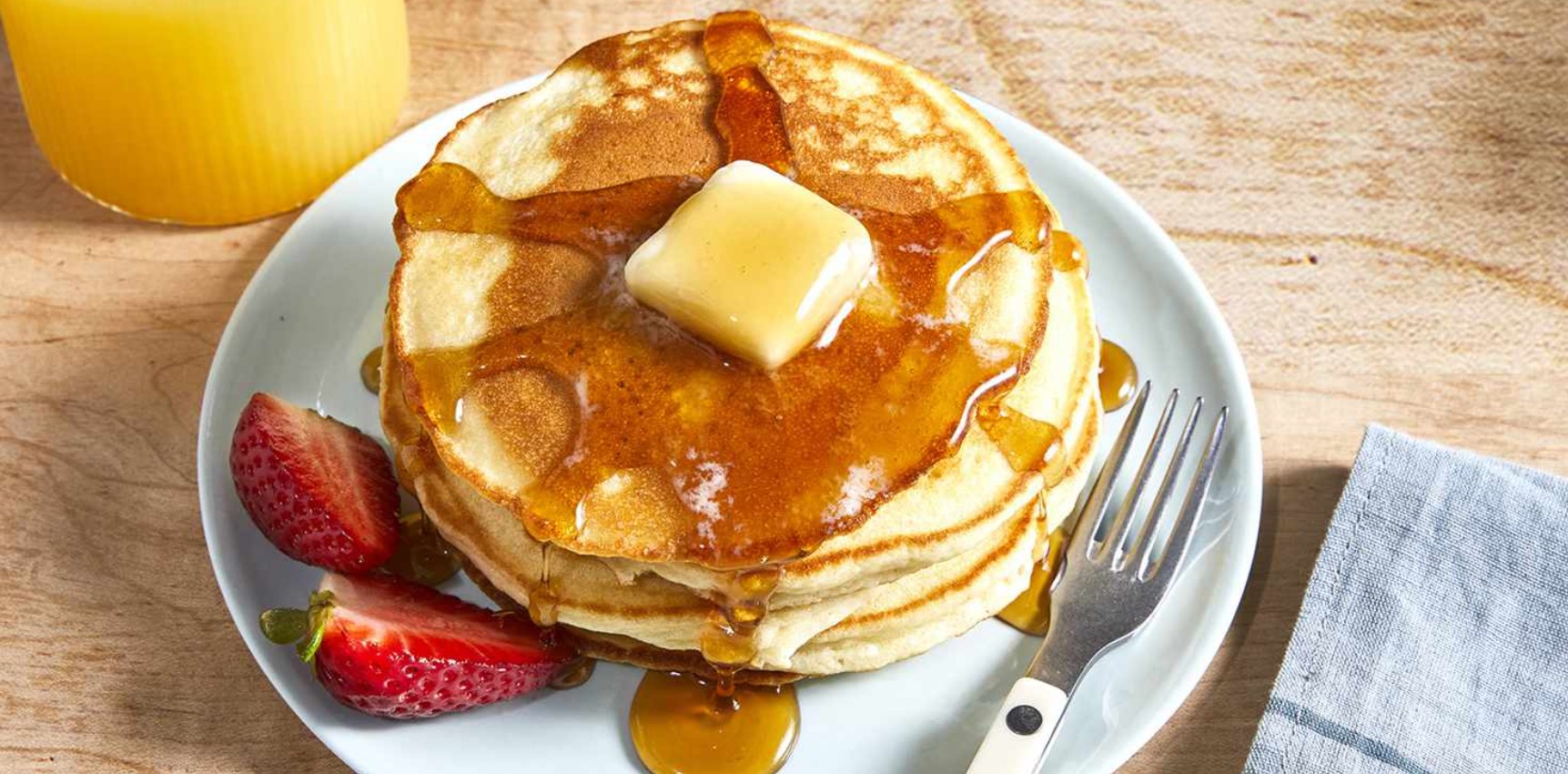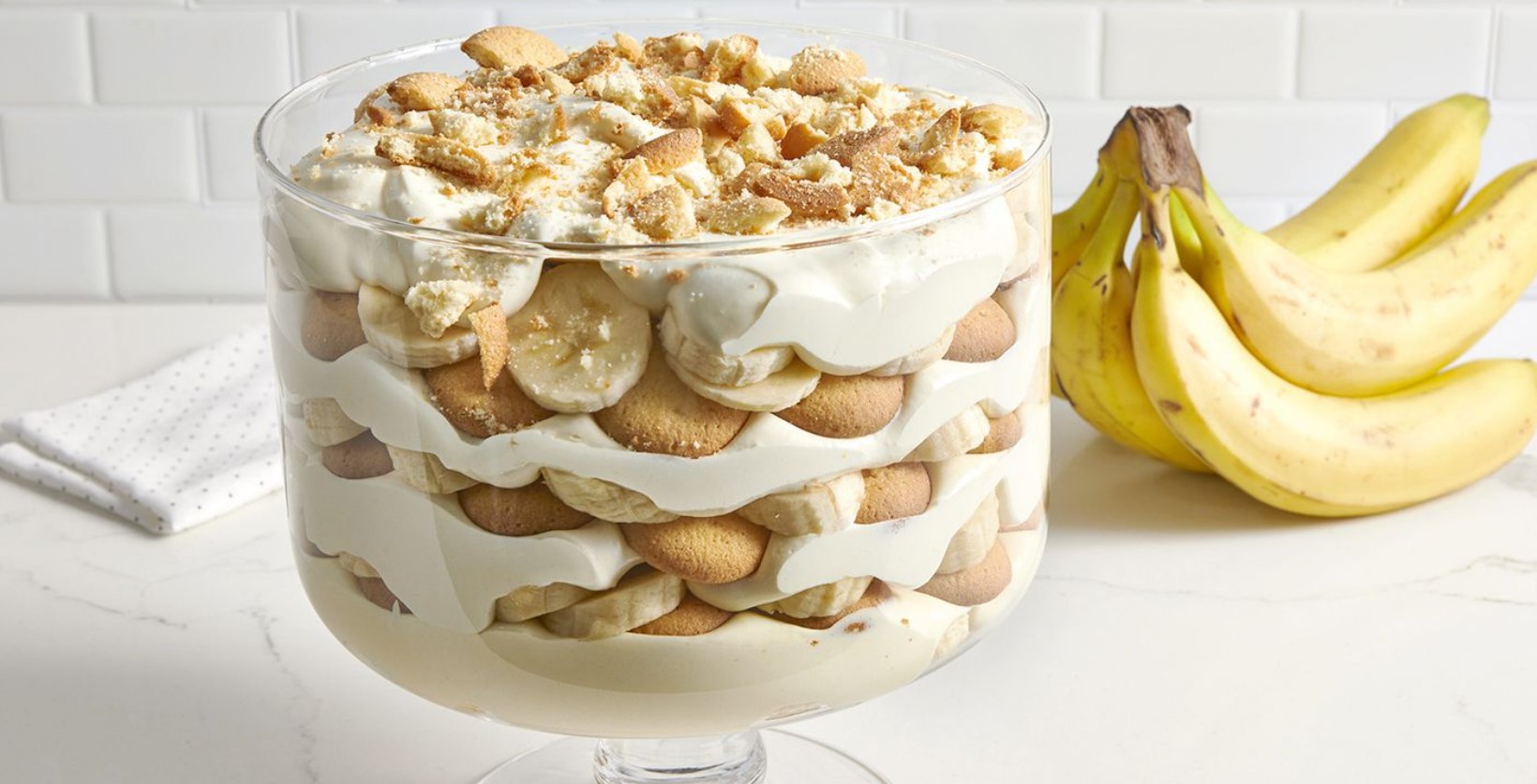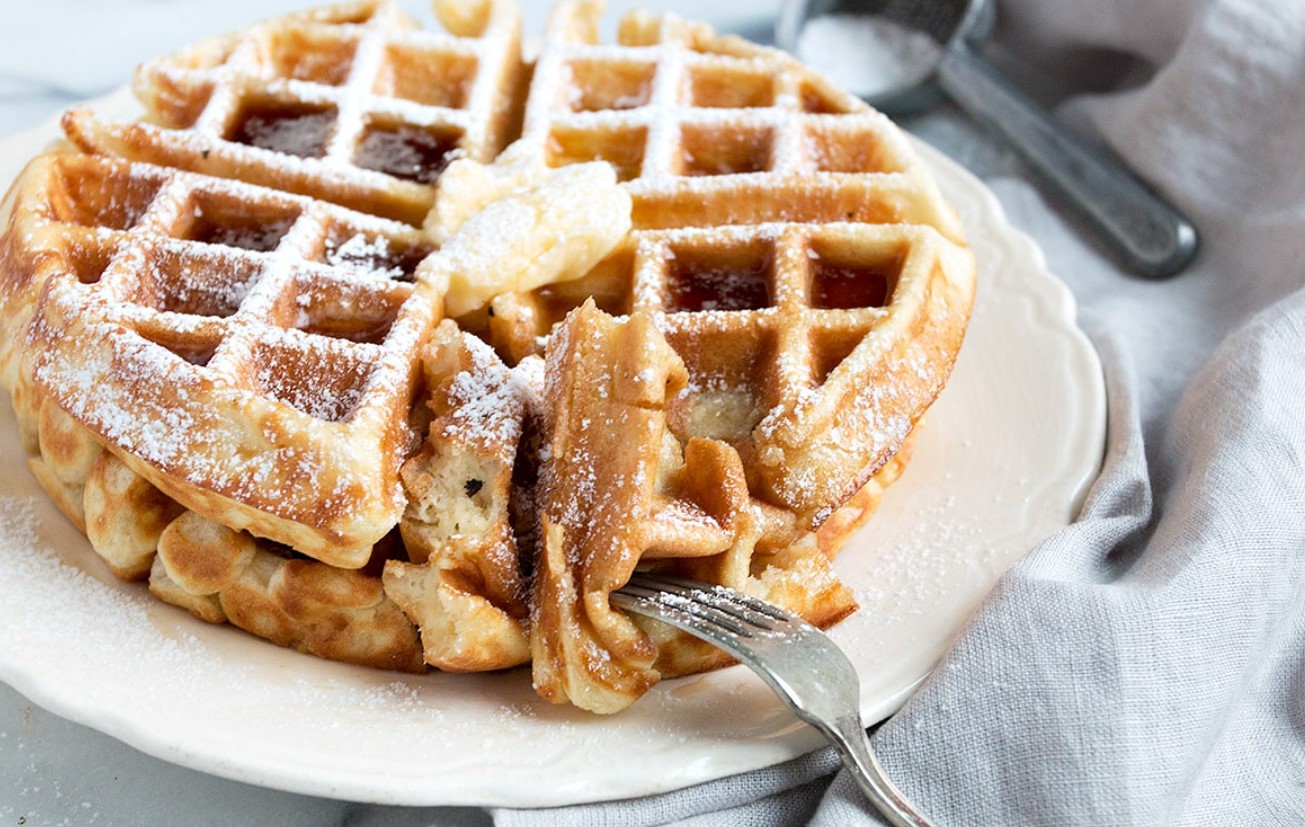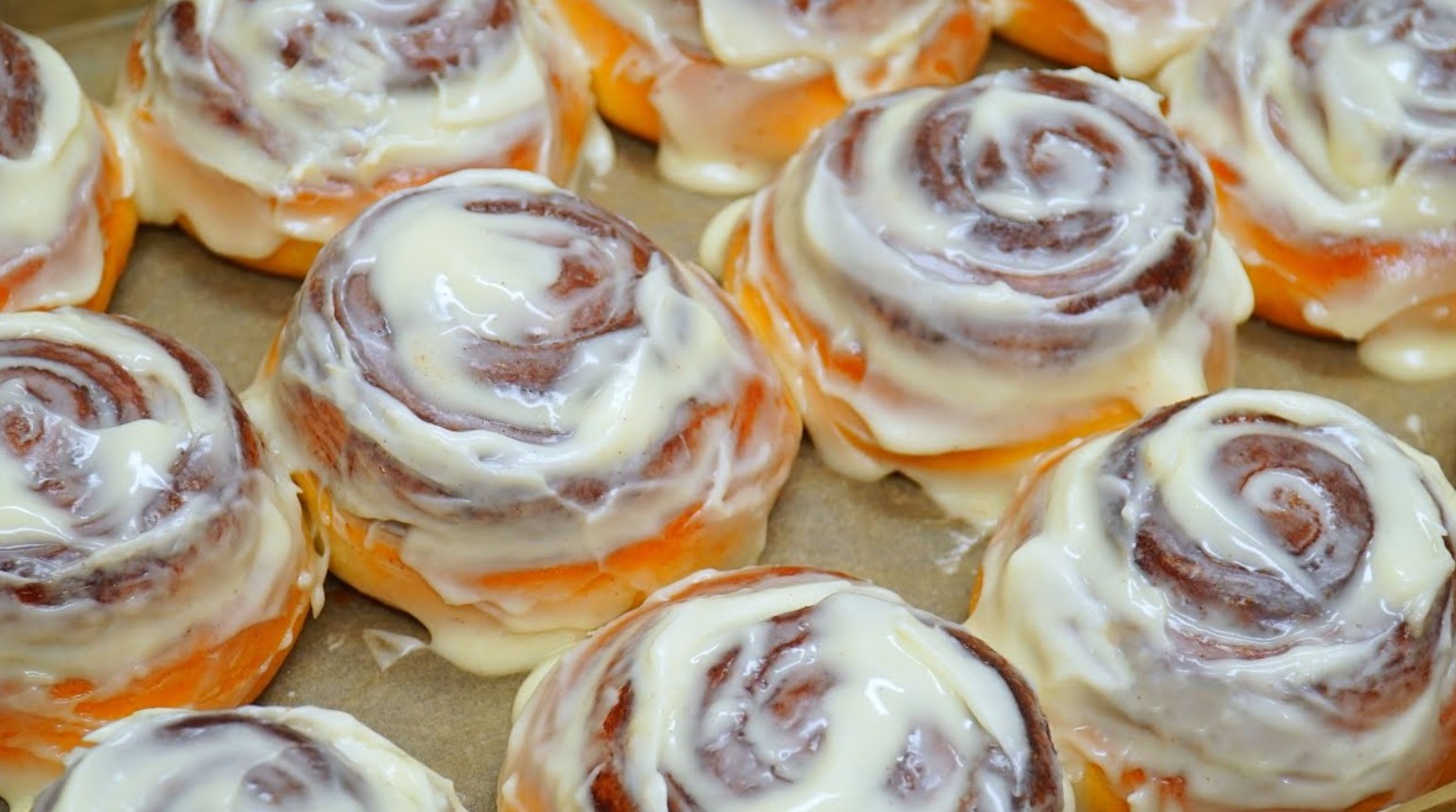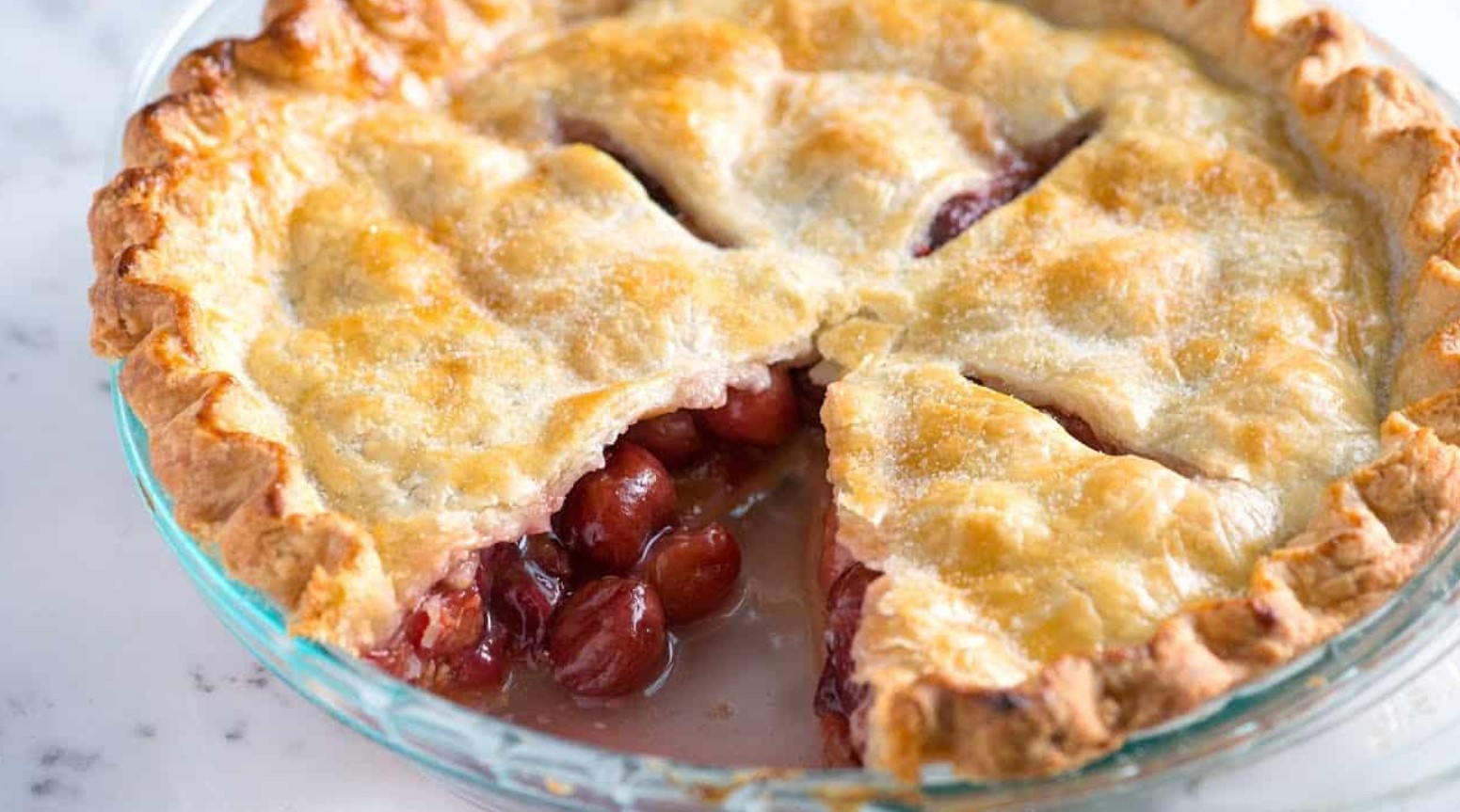Origins of Pancakes
Pancakes have been enjoyed by people all over the world for centuries, but their origins can be traced back to ancient civilizations. The earliest known pancake-like dish dates back to Ancient Greece, where they were called τηγανίτης (tēganitēs) and were made with wheat flour, olive oil, honey, and curdled milk. The Romans also had their own version of pancakes, known as Alita Dolcia, which were made with eggs, milk, and flour.
In medieval Europe, pancakes became a popular dish among peasants and nobles alike. They were often made with buckwheat flour, which was more readily available than wheat flour at the time. Pancakes were also a staple food during Lent, as they could be made without the use of eggs or dairy products.
As Europeans began to explore the New World, they brought their love of pancakes with them. Native Americans had been making a similar dish called “nokehick” for centuries, using cornmeal instead of wheat flour. The settlers adapted this recipe, creating what we now know as cornmeal pancakes or johnnycakes.
Today, pancakes are enjoyed in a variety of forms and flavors around the world. From the thin, crepe-like pancakes of France to the fluffy, buttermilk pancakes of America, there is a pancake for every palate. Whether topped with maple syrup, fruit, or savory ingredients like bacon and cheese, pancakes continue to be a beloved breakfast food for people of all ages. Their humble origins may be ancient, but the appeal of pancakes remains as strong as ever.

Pancakes Ingredients
When it comes to making delicious pancakes, having the right ingredients is key. The main ingredients you will need are flour, milk, eggs, sugar, salt, and baking powder. Flour is the base of the pancake batter and provides the structure for the pancakes to hold together. Milk adds richness and moisture to the batter, while eggs act as a binding agent to hold everything together.
Sugar is added to the batter to give the pancakes a hint of sweetness, but you can adjust the amount to suit your taste. Salt is important for balancing the flavors in the batter and enhancing the overall taste of the pancakes. Baking powder is what gives the pancakes their light and fluffy texture, as it helps the batter to rise when cooked.
You can also add additional ingredients to the batter to customize your pancakes, such as vanilla extract for flavor, cinnamon for warmth, or chocolate chips for a sweet treat. Some people like to add mashed bananas or blueberries for extra flavor and texture.
Overall, having the right ingredients and knowing how to combine them properly is essential for making perfect pancakes. Experimenting with different ingredients and flavors can help you create a variety of delicious pancakes to enjoy for breakfast or brunch. So gather your ingredients, mix up a batch of batter, and get flipping those pancakes!
Easy step-by-step pancakes making process
Pancakes are a delicious and versatile breakfast option that can be enjoyed by people of all ages. Making pancakes from scratch may seem daunting, but with a simple step-by-step process, anyone can create fluffy and delicious pancakes in no time.
To start, gather all the necessary ingredients: flour, sugar, baking powder, salt, milk, eggs, and butter. In a large mixing bowl, combine the dry ingredients – flour, sugar, baking powder, and salt. In a separate bowl, whisk together the wet ingredients – milk, eggs, and melted butter.
Next, slowly pour the wet ingredients into the dry ingredients, stirring gently until just combined. Be careful not to overmix the batter, as this can lead to tough pancakes. If the batter is too thick, you can add a little more milk to achieve the desired consistency.
Heat a non-stick skillet or griddle over medium heat and lightly grease it with butter or cooking spray. Using a ladle or measuring cup, pour a small amount of batter onto the skillet, spreading it out into a circle. Cook the pancake for 2-3 minutes, or until bubbles form on the surface and the edges start to look set.
Flip the pancake over and cook for an additional 1-2 minutes, or until golden brown. Repeat this process with the remaining batter, adding more butter or cooking spray to the skillet as needed.
Once all the pancakes are cooked, serve them warm with your favorite toppings such as maple syrup, fresh fruit, or whipped cream. Enjoy your homemade pancakes with friends and family, and don’t be afraid to experiment with different flavors and add-ins to create your own unique pancake creations.
What is the best way to serve pancakes?
When it comes to serving pancakes, there are many ways to make them even more delicious and appealing. One of the best ways to serve pancakes is by stacking them high on a plate, drizzling them with maple syrup, and topping them with a dollop of whipped cream and fresh berries. This presentation not only looks visually appealing but also adds a burst of flavor and texture to the pancakes.
Another popular way to serve pancakes is by layering them with a spread of Nutella or peanut butter between each pancake. This creates a decadent and rich flavor that is sure to satisfy any sweet tooth. Additionally, adding a sprinkle of powdered sugar or a dash of cinnamon on top can enhance the overall taste of the pancakes.
For a more savory twist, serving pancakes with a side of crispy bacon or scrambled eggs can create a delicious breakfast or brunch option. The combination of sweet and savory flavors is a winning combination that is sure to please any palate.
Lastly, experimenting with different toppings such as chocolate chips, sliced bananas, or toasted nuts can add a fun and creative touch to pancakes. Whether you prefer classic toppings like butter and syrup or more adventurous combinations, the best way to serve pancakes ultimately comes down to personal preference and creativity. So don’t be afraid to get creative and have fun with your pancake presentation!
How to store pancakes so they last longer?
To store pancakes so they last longer, it is important to follow a few simple steps. First and foremost, allow the pancakes to cool completely before storing them. Placing hot pancakes in a container can create condensation, which can lead to sogginess and spoilage. Once the pancakes have cooled, place a piece of parchment paper between each pancake to prevent them from sticking together.
Next, choose the right container for storing the pancakes. Airtight containers or resealable plastic bags work well for keeping pancakes fresh. Make sure to seal the container tightly to prevent air from getting in and causing the pancakes to dry out.
If you plan on freezing the pancakes, consider individually wrapping them in plastic wrap before placing them in a freezer-safe container. This will help prevent freezer burn and preserve the pancakes’ texture.
When it comes time to reheat the pancakes, avoid using the microwave, as this can make them rubbery. Instead, try reheating them in a toaster oven or on a skillet over low heat. This will help maintain their fluffy texture and crispy edges.
By following these simple tips, you can store pancakes so they last longer and enjoy them for breakfast or a quick snack whenever you please.
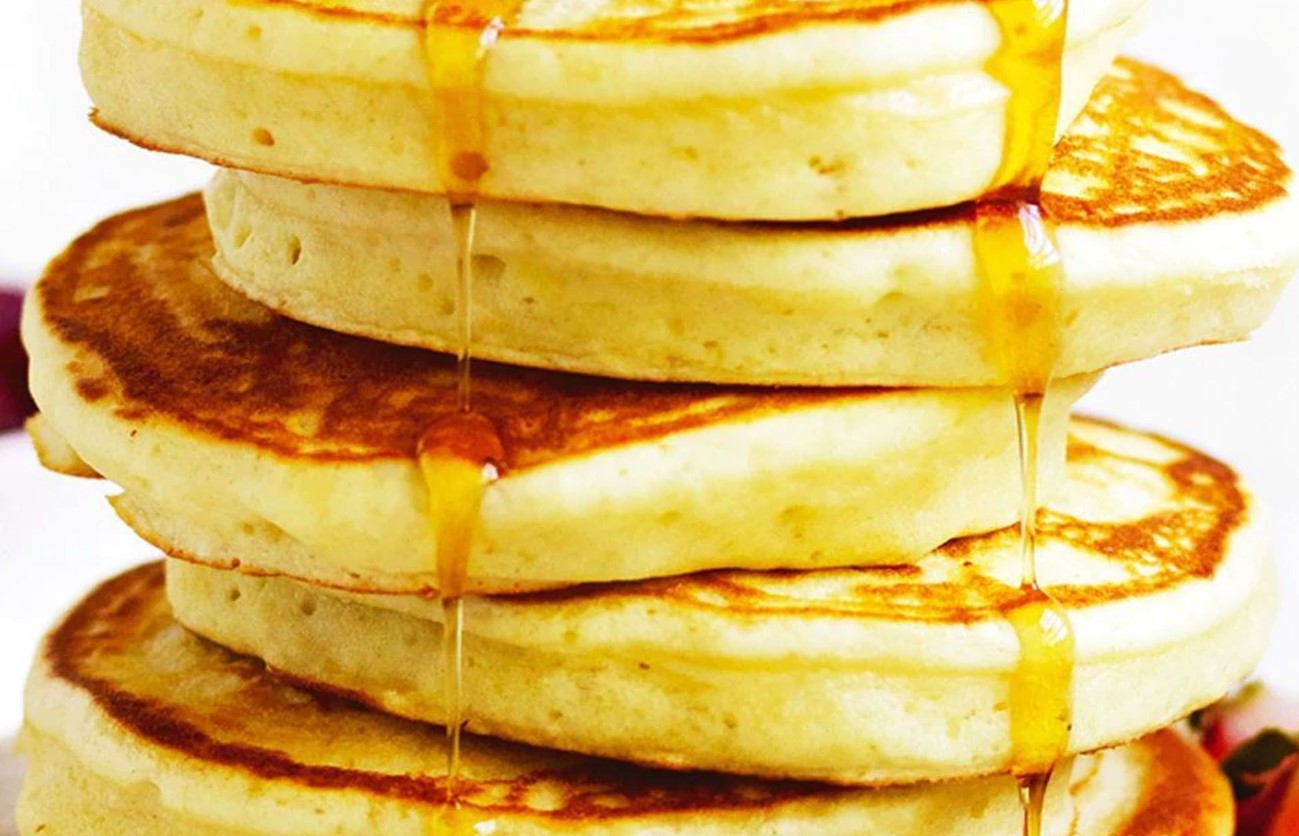
Can you reheat pancakes?
Yes, you can definitely reheat pancakes! Whether you have leftover pancakes from breakfast or you made a big batch for a brunch and want to enjoy them later, reheating pancakes is a simple and easy process. There are a few different methods you can use to reheat pancakes, depending on your preferences and available equipment.
One popular method is to reheat pancakes in the microwave. Simply place the pancakes on a microwave-safe plate and cover them with a damp paper towel to help retain moisture. Heat the pancakes on high for 20-30 seconds, checking them periodically to make sure they don’t overcook. The microwave is a quick and convenient option for reheating pancakes, but be careful not to overheat them or they may become dry.
Another option is to reheat pancakes in a toaster or toaster oven. This method works best for thicker pancakes, as it helps to crisp up the edges and give them a fresh-from-the-pan taste. Simply place the pancakes in the toaster or toaster oven and heat them on a low setting until they are warmed through. Keep an eye on them to prevent burning, and enjoy your warm and toasty pancakes.
If you prefer a more hands-on approach, you can reheat pancakes in a skillet on the stovetop. Heat a non-stick skillet over medium heat and add a small amount of butter or oil. Place the pancakes in the skillet and cook for 1-2 minutes on each side, or until they are heated through and crispy on the edges. This method allows you to customize the level of crispiness and ensures that your pancakes will taste just as good as they did when they were freshly made.
In conclusion, reheating pancakes is a simple process that can be done using a microwave, toaster, toaster oven, or stovetop. Whichever method you choose, make sure to keep an eye on the pancakes to prevent them from overcooking and becoming dry. With a little bit of patience and care, you can enjoy delicious, warm pancakes anytime you want.
